An inspired interpretation of the Vienna Secession and in particular of Gustav Klimt's painting
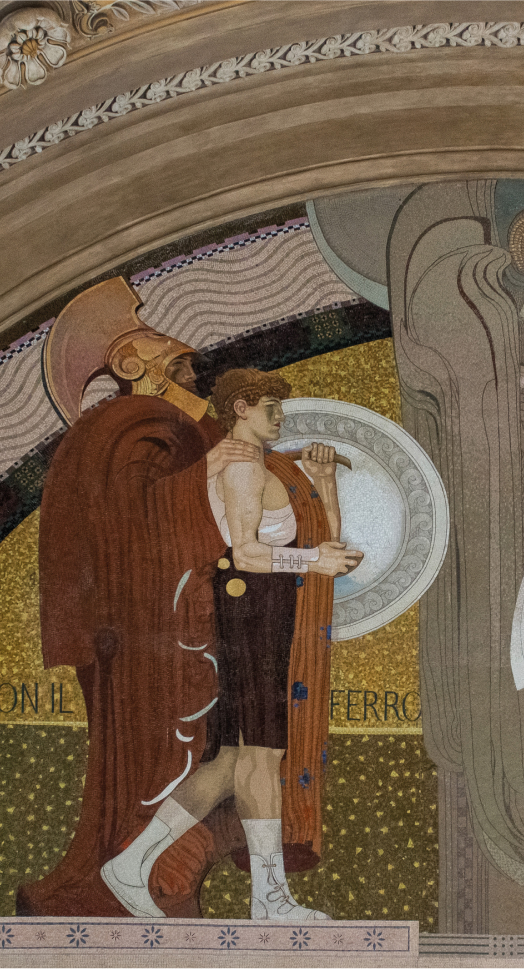
The mosaics in the lunettes of the Propylaeum of Unity were entrusted to the Florentine Giulio Bargellini (1875-1936). Having won the competition announced in 1912, the painter was awarded the job only in 1915, after having twice executed a life model of a lunette and a mosaic trial. Having submitted the definitive cartoons between 1917 and 1920, Bargellini completed the work in 1921.
Bargellini's task was to translate the concept of Liberty into images: for this purpose the artist conceived the allegorical representations of Strength, Work, Faith and Wisdom.
In the eastern lunette, above the view of the Forums, The Strength, a woman dressed in white who wields a sword, advances from the right towards the centre, dominated by The Right; on the opposite side a warrior presents a teenager. In the background, the words "YOU WITH IRON I WITH LOVE".
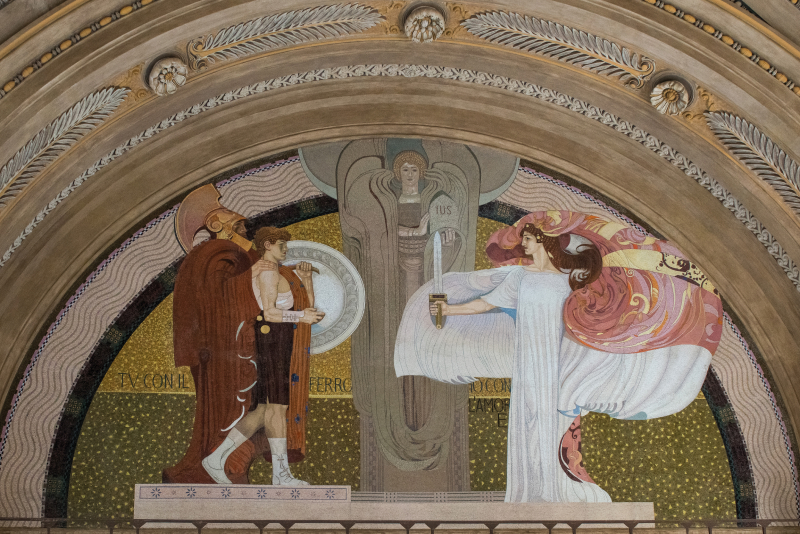
In the lunette to the west, just above the entrance to the Main Colonnade, The Work is a long procession divided into three groups of figures: a pair of white doves, a symbol of peace; a woman with a basket of bread on her head and a girl with an accordion; another woman, dressed in her best, carrying a bundle on her head, and Triptolemus, the epic inventor of the plough, educated by the goddess Ceres to cultivate the fields.
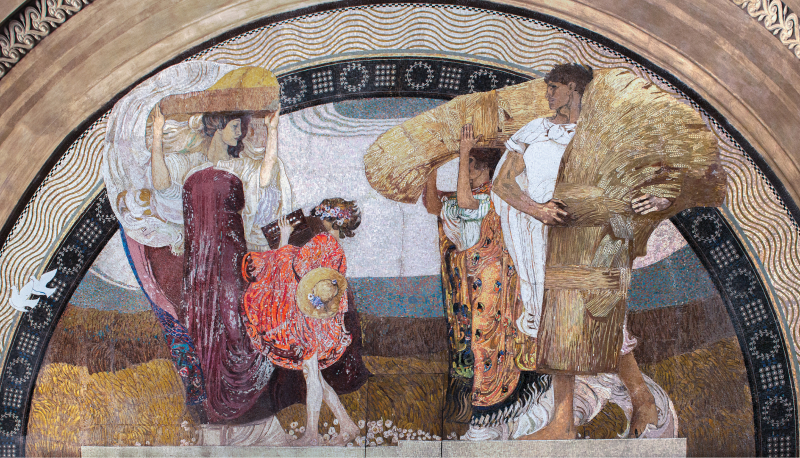
In the southern lunette, above the view of the Ara Coeli Convent, against the background of a city surrounded by mighty walls, The Faith, represented with the features of the goddess Venus, dominates three female figures: one at her feet begs for forgiveness, one atones for guilt through pain, the third carries the lamp, symbol of the presence of God.
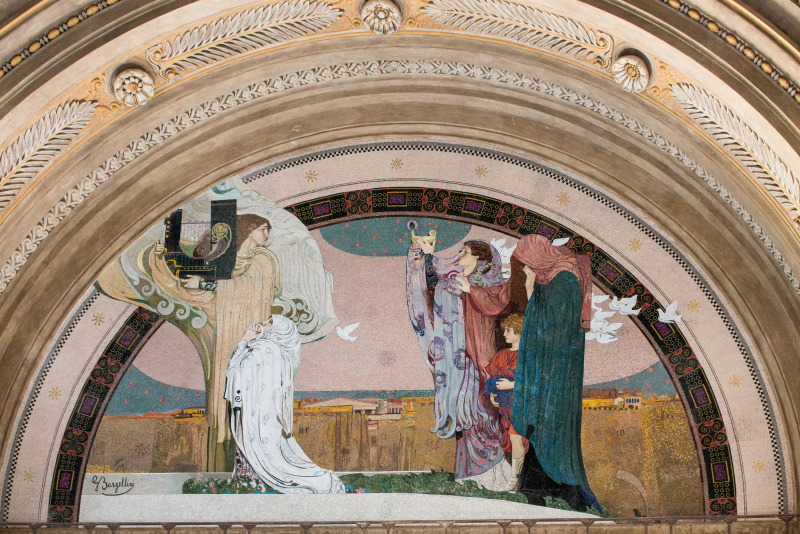
Finally, the north lunette, above the view over Piazza Venezia, is dedicated to The Wisdom. Inside a classroom, a teacher explains the production cycle of electric light to his pupils: in the background an altar bears a candlestick and an open book with the inscription: “LOVE HAS ONLY LIGHT FOR BORDER”.
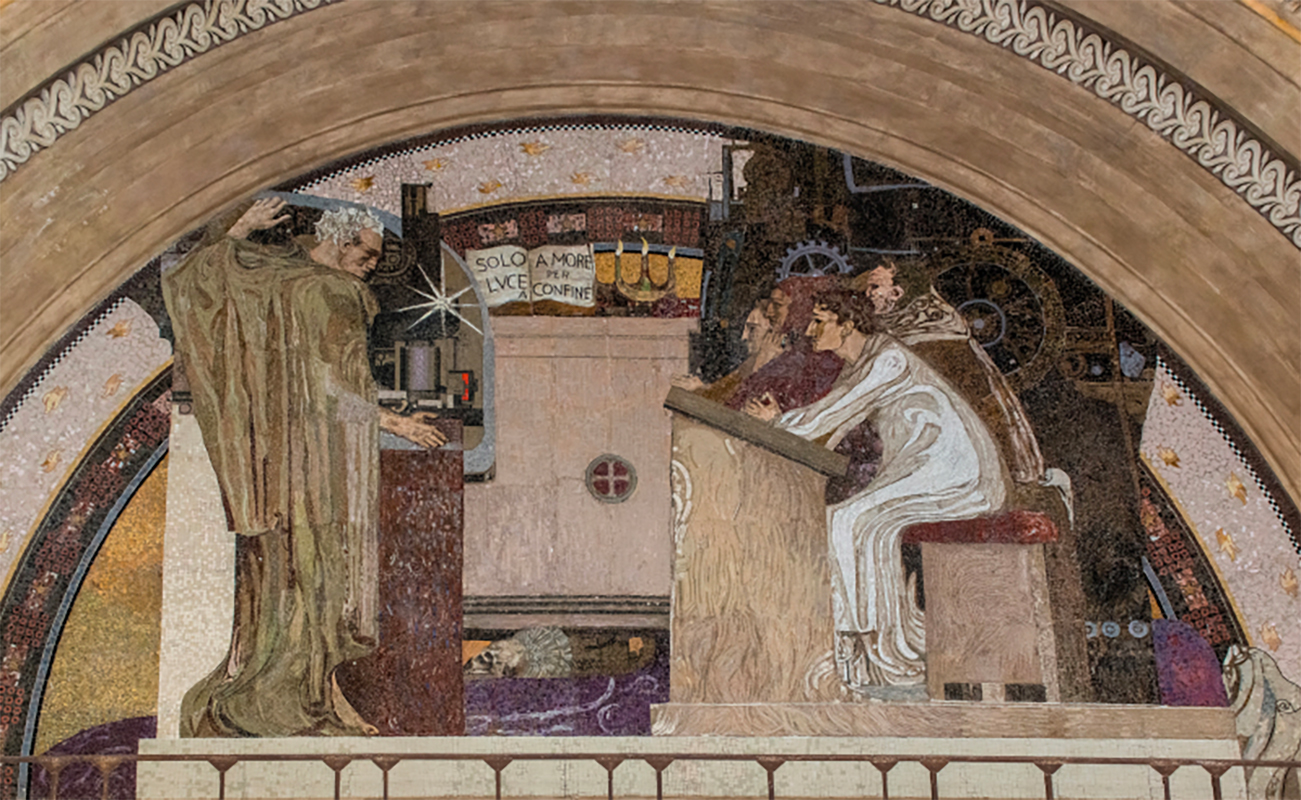
Trained in Florence at the Institute of Fine Arts, Bargellini moved to Rome in 1895 thanks to his victory in the national artistic award, becoming a pupil and collaborator of Cesare Maccari (1840-1919), the master of great decorations, famous for his frescoes in the Palazzo del Senato (1881-1888).
Bargellini’s consecration took place precisely by means of the competition for the mosaics in the Vittoriano: over the following years he then obtained dozens of important public commissions, such as the decorations of the Palazzo della Banca d'Italia, the Palazzo di Giustizia and, again at the Vittoriano, the Sacellum of the Unknown Soldier.
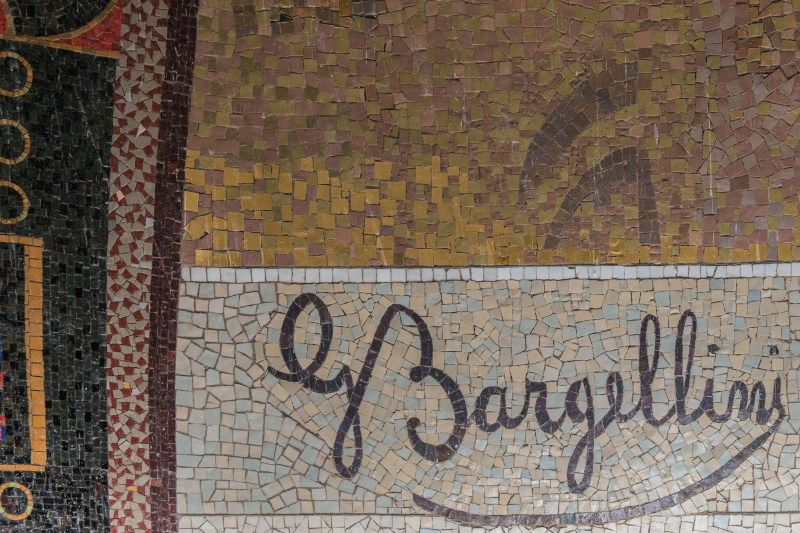
In the mosaics of the Propylaeum of Unity, Bargellini displays a style updated on the Vienna Secession and on Gustav Klimt in particular: in The Strength, for example, the accentuated linearism, decorative taste and chromatic choices recall the Austrian master. Only in The Wisdom, conceived last in 1919, does Bargellini appear to abandon this language in favour of a more convinced adhesion to the Expressionist currents.